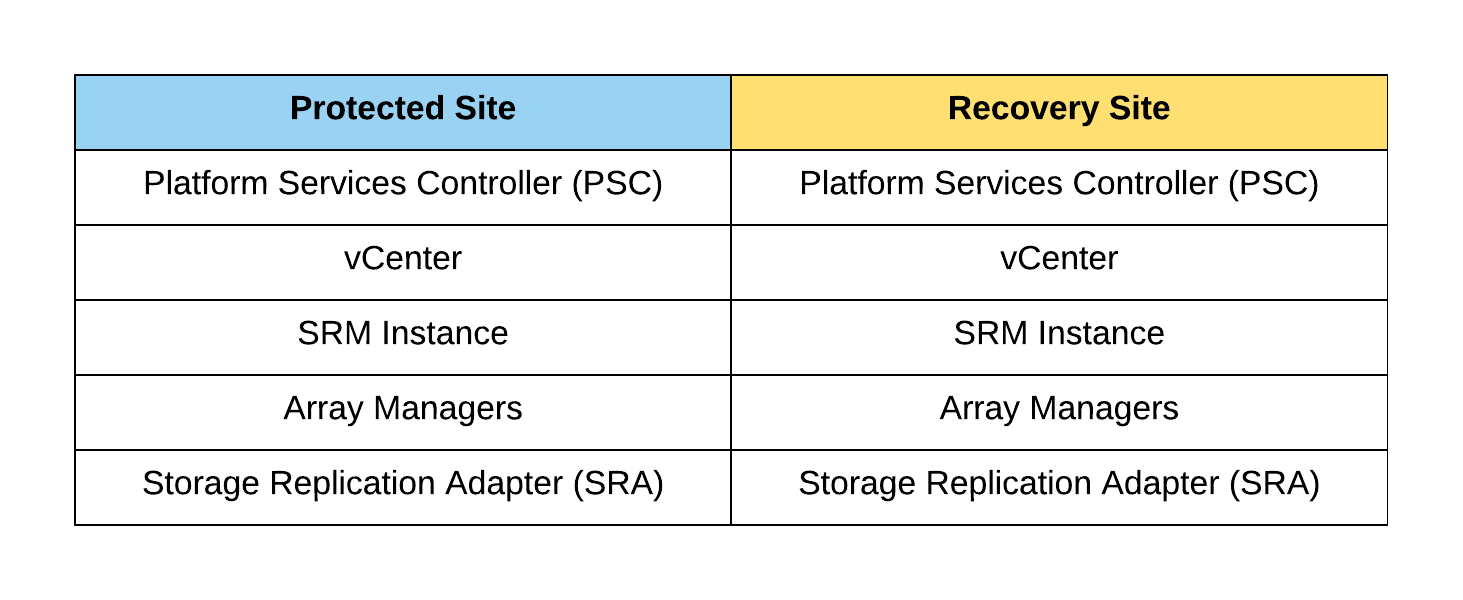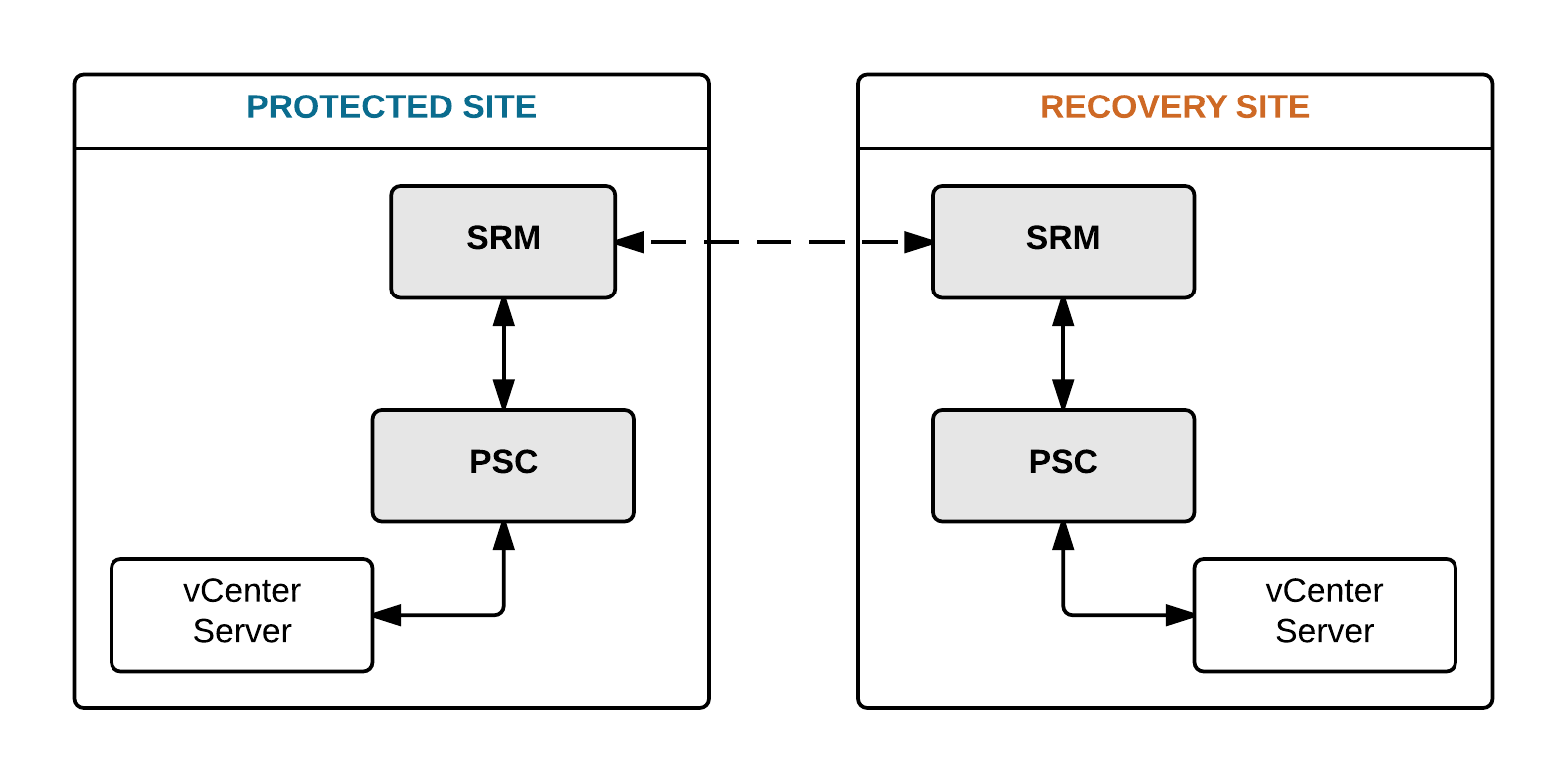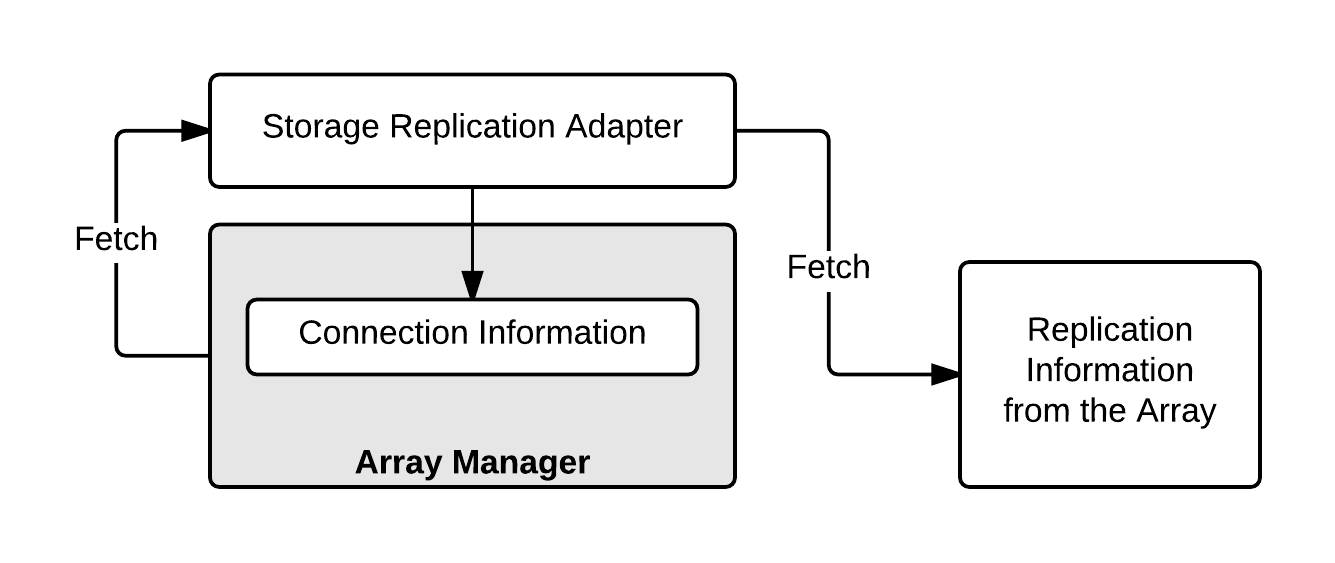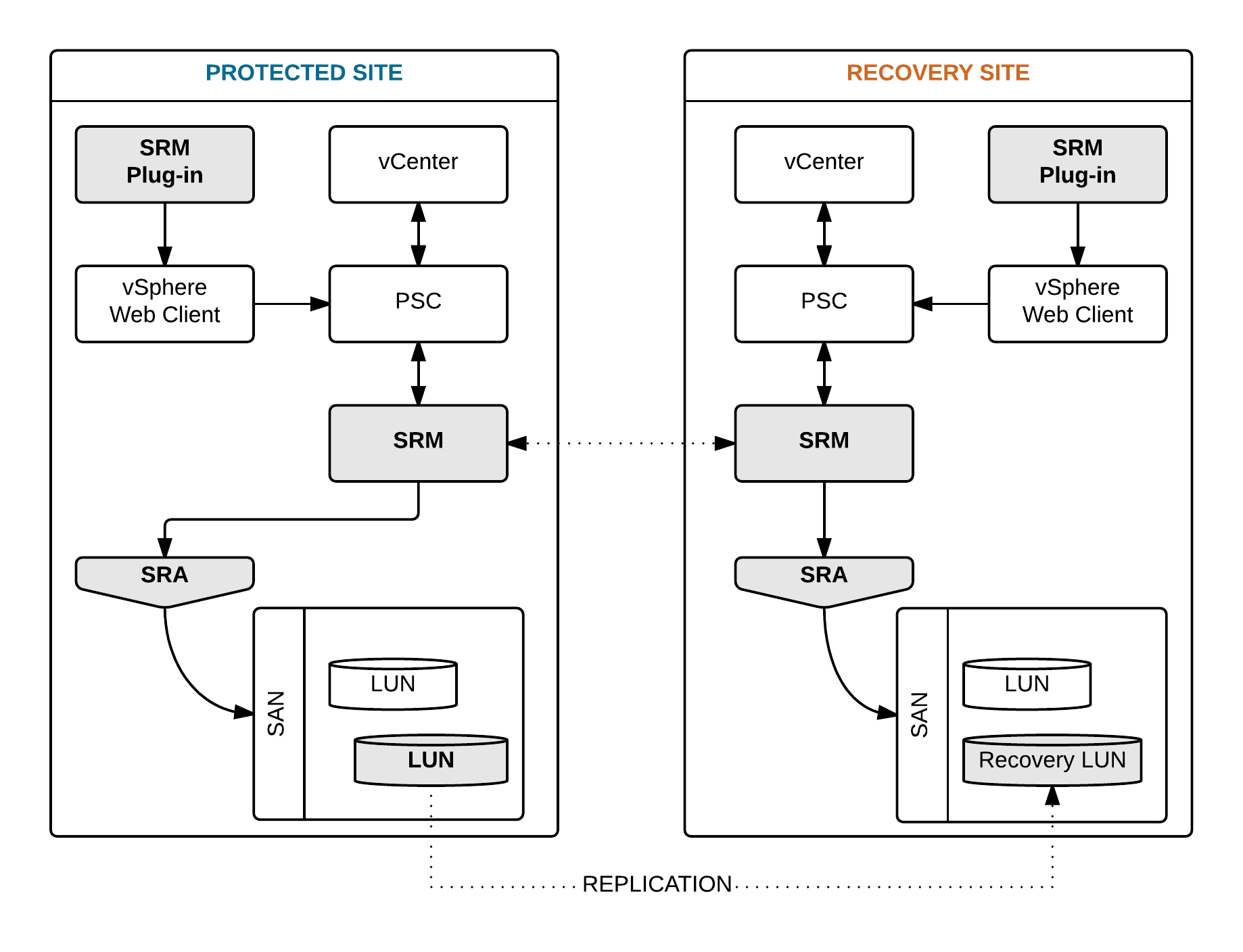In this article by Abhilash G B, the author of the Disaster Recovery using VMware vSphere Replication and vCenter Site Recovery Manager - Second Editon, we will learn about Site Recovery Manager and its architecture.
(For more resources related to this topic, see here.)
What is Site Recovery Manager?
vCenter Site Recovery Manager (SRM) is an orchestration software that is used to automate disaster recovery testing and failover. It can be configured to leverage either vSphere replication or a supported array-based replication. With SRM, you can create protection groups and run recovery plans against them. These recovery plans can then be used to test the Disaster Recovery (DR) setup, perform a planned failover, or be initiated during a DR. SRM is a not a product that performs an automatic failover, which means there is no intelligence built into SRM that would detect a disaster/outage and cause failover of the virtual machines (VMs). The DR process should be manually initiated. Hence, it is not a high-availability solution either, but purely a tool that orchestrates a recovery plan.
The SRM architecture
vCenter SRM is not a tool that works on its own. It needs to talk to other components in your vSphere environment. The following are the components that will be involved in an SRM-protected environment:

SRM requires both the protected and the recovery sites to be managed by separate instances of vCenter Server. It also requires an SRM Instance at both the sites. SRM now uses PSC as an intermediary to fetch vCenter information. The following are the possible multiple topologies:

SRM as a solution cannot work on its own. This is because it is only an orchestration tool and does not include a replication engine. However, it can leverage either a supported array-based replication or VMware's proprietary replication engine vSphere Replication.
Array manager
Each SRM instance needs to be configured with an array manager for it to communicate with the storage array. The Array Manager will detect the storage array using the information you supply to connect to the array. Before even you could add an array manager, you will need to install an array specific Storage Replication Adapter (SRA). This is because, the Array Manager uses the SRA installed to collect the replication information from the array:

Unlock access to the largest independent learning library in Tech for FREE!
Get unlimited access to 7500+ expert-authored eBooks and video courses covering every tech area you can think of.
Renews at $19.99/month. Cancel anytime
Storage Replication Adapter (SRA)
The SRA is a storage vendor component that makes SRM aware of the replication configuration at the array. SRM leverages the SRA's ability to gather information regarding the replicated volumes and direction of the replication from the array.
SRM also uses the SRA for the following functions:
- Test Failover
- Recovery
- Reprotect

It is important to understand that SRM requires the SRA to be installed for all of its functions leveraging array-based replication.
When all these components are put together, a site protected by SRM would look as depicted in the following figure:

SRM conceptually assumes that both the protected and the recovery sites are geographically separated, but such a separation is not mandatory. You can use SRM to protect a chassis of servers and have another chassis in the same data center as the recovery site.
Summary
In this article, we learned what VMware vCenter Site Recovery Manager is and also its architecture.
Resources for Article:
Further resources on this subject:
 United States
United States
 Great Britain
Great Britain
 India
India
 Germany
Germany
 France
France
 Canada
Canada
 Russia
Russia
 Spain
Spain
 Brazil
Brazil
 Australia
Australia
 Singapore
Singapore
 Canary Islands
Canary Islands
 Hungary
Hungary
 Ukraine
Ukraine
 Luxembourg
Luxembourg
 Estonia
Estonia
 Lithuania
Lithuania
 South Korea
South Korea
 Turkey
Turkey
 Switzerland
Switzerland
 Colombia
Colombia
 Taiwan
Taiwan
 Chile
Chile
 Norway
Norway
 Ecuador
Ecuador
 Indonesia
Indonesia
 New Zealand
New Zealand
 Cyprus
Cyprus
 Denmark
Denmark
 Finland
Finland
 Poland
Poland
 Malta
Malta
 Czechia
Czechia
 Austria
Austria
 Sweden
Sweden
 Italy
Italy
 Egypt
Egypt
 Belgium
Belgium
 Portugal
Portugal
 Slovenia
Slovenia
 Ireland
Ireland
 Romania
Romania
 Greece
Greece
 Argentina
Argentina
 Netherlands
Netherlands
 Bulgaria
Bulgaria
 Latvia
Latvia
 South Africa
South Africa
 Malaysia
Malaysia
 Japan
Japan
 Slovakia
Slovakia
 Philippines
Philippines
 Mexico
Mexico
 Thailand
Thailand



















